
Two Virtual Reality Companies
Abandon Elastic Straps
Go to Home Page
Click here to print
this comparison
Click here for information about an adapter that is guaranteed to be the most comfortable elastic strap replacement available.
Elastic straps are common for Virtual Reality viewers and many of the current head mounted VR viewing devices use elastic strap mounting systems.
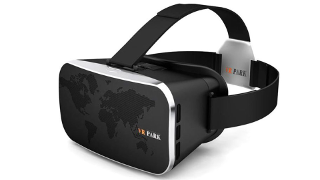
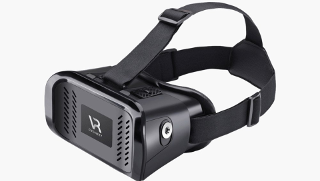

There are, however, some problems with these elastic strap designs. The first is that the elastic straps cause discomfort by compressing the skull and pulling the viewing device into the forehead and cheeks. The second relates to how the straps pass around the ears. If the straps are positioned low on the back of the skull the straps will pass over and compress the ears. If the straps are positioned high enough to avoid the ears, the straps tend to slip up and off the back of the head.

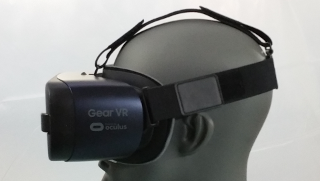
There are two companies that have abandened these elastic straps. One is the Oculus division of Facebook and the other is Hands Free Headgear.
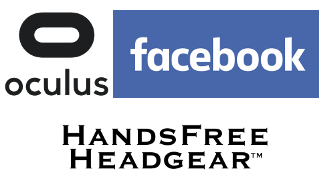
Both of these companies have adopted a semi rigid plastic frame in place of elastic straps.
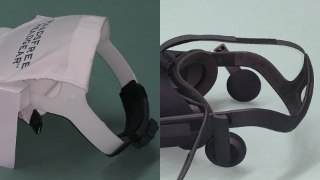
At one time Oculus used elastic straps but their most recent Rift Commercial Version 1 (CV1) has the plastic frame. Hands Free Headgear (hfheadgear) has always offered a plastic frame with its adapters.
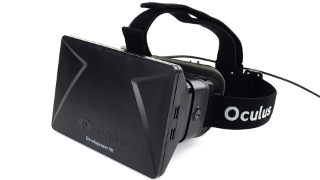
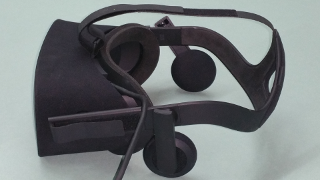
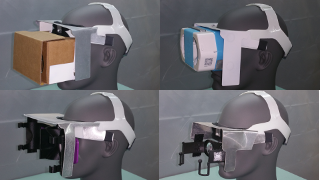
Let's look at some similarities and differences for these two plastic frame VR viewer support systems.
Both systems have horizontal members that pass along the sides of the head. These members are located to pass well above the ears for the hfheadgear or close to the tops of the ears for the CV1.
Both systems have the side members dip down toward the back of the head. This allows the back member to pass under the occipital area on the back of the skull.
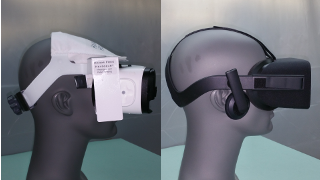
Both systems provide some way to adjust for the fact that different people have different size heads. The hfheadgear uses an knob on the back that adjusts both sides equally as the knob is turned. The CV1 has two size adjusting velcro strips (one on each side).
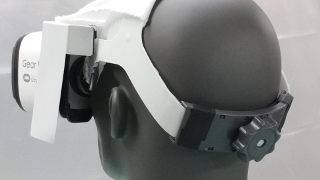
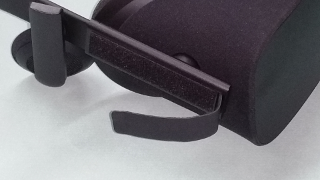
Both systems provide a way to loosen the the support system when the adapter is put on or taken off. For hfheadgear the size adjusting knob performs this task. On the CV1 the side members are made with plastic tubes where one slides inside the other. The back section is attached with elastic straps inside these tubes so that the whole adapter can be "stretched" open to put on or take off.

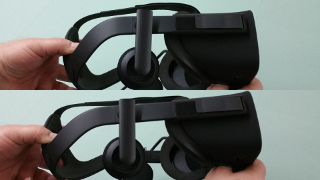
The next area reflects a difference between the CV1 and the hfheadgear. The CV1 has a trianglar member on the back of the head. We presume this triangle was created to provide a mounting point for the top strap of the CV1 which passes from back to front across the top of the head. The hfheadgear has top strap that passes from left to right so it does not have or need a mounting point on the back of the head.
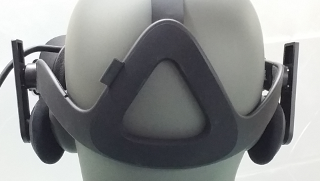


Also, the hfheadgear design includes a small counterweight which is attached to the back strap. This counterweight is included bacause the Gear VR mounts its cell phone (with its battery) in the farthest possible forward position and the counterweight is provided to better balance against the weight of the phone.
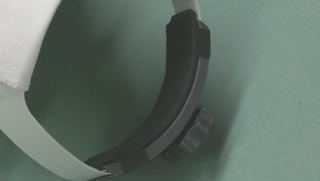
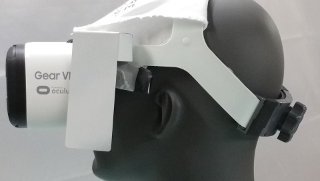
Regarding the top strap, both systems make contact with the upper forehead area to position and stabilize the viewing assembly in front of the face. The CV1 has a rubberized strap with possibly three square inches of primary contact area. The hfheadgear adapter has a velcro attached cotton panel with approximately twenty five square inches of primary contact area. The hfheadgear cotton panel makes the whole assembly feel light and cool. It also absorbes perspiration and can be easily laundered with any other cotton items.

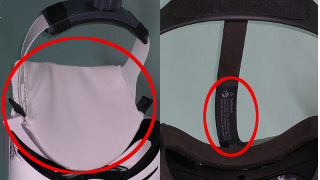
Virtual reality often includes sound with the image content so headphones must be included in a design. CV1 has included permantly attached headphones with the viewer. The hfheadgear adapter leaves the area around the hears free so the wearer can use whatever type of headphones they prefer.

A final differnce betwen the two systems relates to how the viewer assembly is positoned in front of the eyes. The CV1 relies on some contact with the forehead and cheeks to maintain proper position. It should be noted that this contact is substantially lessened when compared to any system that relies entirely on elastic straps around the skull. The hfheadgear has a "detachable attachment" system that provides substantial freedom to adjust the position of the viewer relative to the face. The hfheadgear system supports the viewing device in front of the face and does not require any contact with the forehead or cheeks.

Both the CV1 head mounting system and the hfheadgear adapters represent a significant improvement over the "ski goggle" elastic straps. The CV1 system is available only with the Oculus Rift CV1 viewer. The Hands Free Headgear adapter is available for retrofit to any of the five million Samsung Gear VR viewers that have been sold.


If someone suspects that Hands Free Headgear has been copying certain aspects of the Rift CV1 designs, please note that Hands Free Headgear began shipping early versions of its adapters in April of 2015 and filed its utility patent application in October of 2015. The CV1 did not appear until the spring of 2016, fully one year after the Hands Free Headgear products were shipping.
